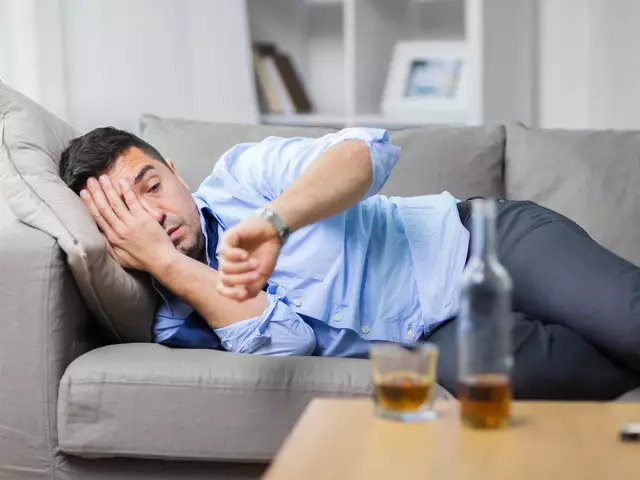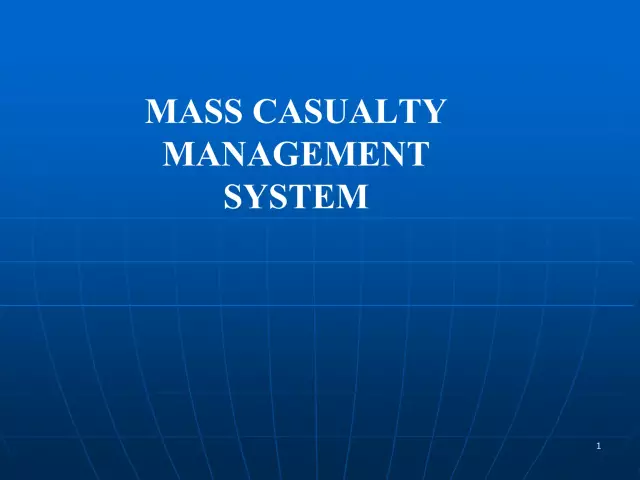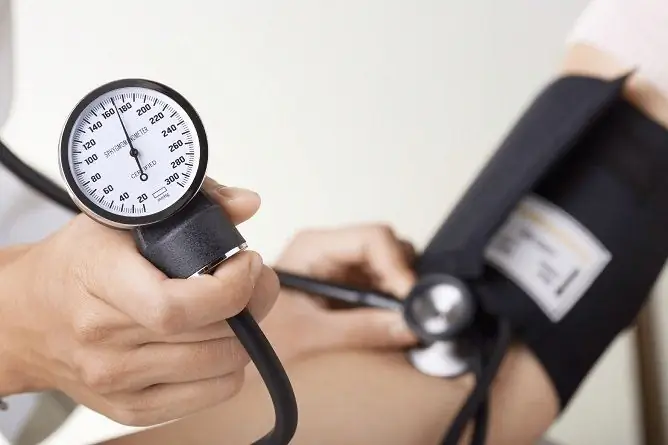- Author Rachel Wainwright [email protected].
- Public 2023-12-15 07:39.
- Last modified 2025-11-02 20:14.
Non-drug and drug treatment of hypertension
The content of the article:
- Why does hypertension occur
- Signs of primary hypertension
- Diagnostics
- Treatment regimens for hypertension
- Modern treatment of hypertension
- Non-drug therapy of hypertension and prevention
- Video
Treatment of hypertension is an urgent task of medicine, since the disease is one of the most widespread in the world. Recently, this issue has become more acute - the average age of a patient with hypertension has almost halved. The danger of arterial hypertension lies not in unpleasant symptoms or short-term surges in pressure, although they are negative for health. The point is in complications - hypertension brings pathologies such as heart attack, stroke, aortic aneurysm closer. Such a disease requires timely diagnosis and treatment. At the initial stages of the disease, pharmacological drugs are not used, but with progression, drug treatment of hypertension should be prescribed.

Choosing the treatment of hypertension, the doctor takes into account its degree, the existing risks, the individual parameters of the patient
Why does hypertension occur
Hypertension is a pathology characterized by a chronic, that is, prolonged increase in blood pressure (BP). The disease usually occurs between the ages of 40 and 50, but more and more cases are found when the diagnosis is made at a young age - this is associated with an abundance of bad habits, disturbed sleep and wakefulness intervals, poor diet, and unfavorable ecology.
There are two main types of this disease - primary and secondary hypertension. Primary hypertension is the most interesting in terms of causes and clinical cases, it accounts for more than 90% of all visits to doctors for high blood pressure. This is an increase in blood pressure, which occurred on its own, without previous diseases. It has no specific organic cause, and the pathogenesis is complex and forms a vicious circle. The main role is played by the formation of renin, which is converted to angiotensin by ACE (angiotensin-converting enzyme). This results in the release of a powerful vasoconstrictor, angiotensin II, which triggers a cascade of effects. Treatment is symptomatic or pathogenetic (aimed at breaking the vicious circle).
Secondary hypertension has a clear cause - it has an underlying condition that affects one of the systems that regulate blood pressure. It can be pathology of the cardiovascular system, kidneys, endocrine system (pituitary or adrenal glands, sometimes the thyroid gland). Treatment of secondary hypertension takes into account its etiology, the true cause. The pressure decreases, but the main task of the doctor is to eliminate the primary disease. This type of increase in blood pressure accounts for about 5% of medical requests for hypertension.
Risk factors contribute to the onset of primary hypertension:
- stress and emotional stress;
- smoking;
- violation of sleep and wakefulness;
- improper nutrition;
- obesity;
- inactive lifestyle;
- age over 40;
- male gender;
- genetic predisposition (the presence in the family of people with a similar pathology);
- diabetes;
- disorders of water-salt metabolism (for example, excessive consumption of sodium in the form of table salt).
They statistically significantly increase the risk of developing the disease, and if several risk factors are present, then the likelihood of developing hypertension increases significantly.
Signs of primary hypertension
A sign of arterial hypertension is blood pressure values exceeding 130 mm Hg. Art. for systolic and 90 mm Hg. Art. for diastolic.
Hypertension can be latent for a long time, a person often does not notice that his blood pressure is higher than normal. This is possible with a mild form of the disease. Patients only occasionally experience unpleasant symptoms such as general malaise and headache attacks, as a rule, they do not pay much attention to it.

The patient may be unaware for a long time that he has high blood pressure
At later stages, the disease manifests itself with a vivid clinic, which varies from mild malaise to vivid symptoms associated with damage to target organs and systems:
- cardiovascular (feeling of squeezing or painful jolt behind the breastbone, tachycardia, arrhythmia, uneven force of heartbeats or a feeling of cardiac arrest, tingling sensation);
- brain (dizziness, drowsiness, headaches, blurred consciousness, impaired memory and thought process);
- kidney (oliguria - decreased urine output, pain during urination, development of kidney dystrophy);
- retina of the eye (flies before the eyes, darkening in the eyes, blurred vision).
When such symptoms appear, you should consult a specialist, and not resort to self-treatment. First of all, it is necessary to determine the exact degree of the disease - at the first degree, drug treatment is not used, or they are used symptomatically, and the manifestations of the disease are eliminated by normalizing the daily regimen, revising the diet and increasing physical activity.
Diagnostics
Then a comprehensive examination is assigned. It begins with a doctor's examination and blood pressure measurement, followed by several instrumental methods - an ECG (electroencephalogram) is performed, an ultrasound examination of the heart muscle and heart chambers for hypertrophy, a portable tonometer is installed to measure blood pressure throughout the day - this provides comprehensive information, according to which can accurately establish the presence of hypertension and its type (day or night). The fundus is examined for the presence of modified vessels, which are often found with prolonged exposure to high pressure.
Laboratory diagnostic methods include a complete blood count and urine test, and a biochemical blood test.
Treatment regimens for hypertension
There is a certain standard of treatment for hypertension. This is an algorithm of actions with a list of recommended drugs, which is approved by international commissions and in accordance with which therapy is performed. The doctor can retreat from it only when the patient has a special, non-trivial case. The unified protocol is used both in the clinic and in the hospital setting.
From the very beginning, all patients with hypertension are divided into those who have it primary and those who have secondary. Then the stage of hypertension is determined by the presence of damage to target organs in accordance with the scale:
- Hypertensive disease (HD) stage I - damage to organs and systems is absent or insufficient for diagnosis, and hypertensive crises do not appear or are not complicated by organ failure.
- Stage II GB - single injuries in organs, hemorrhages in the parenchyma, which are accompanied by corresponding symptoms. The occurrence of a complicated hypertensive crisis and its consequences is possible.
- Stage III HD - multiple damage to target organs, failure associated with their dysfunction, development of fibrosis and other changes in their structure. There is a high risk of a complicated crisis, maintenance therapy and constant correction of blood pressure are required.
Modern treatment of hypertension
The basis of the treatment of hypertension is the effect on the pathogenetic mechanisms with the help of combination therapy, which allows to treat the pathology comprehensively. For this, several groups of drugs are used that differ in their action. The main group drugs include:
- Diuretics are drugs that significantly increase daily diuresis (urination) by affecting the nephrons of the kidneys and the ionic balance in them. Diuretics can use various mechanisms, it can be the antagonism of aldosterone (which retains sodium in the body, and with it water - this is how Spironolactone and Veroshpiron act), the exchange of sodium for potassium (while sodium leaves the body and pulls fluid along - most diuretics act in exactly this way, for example, Furosemide). This group also includes Hydrochlorothiazide, Hypothiazide, Indapamide (and its combined drug Arifon).
- Beta-blockers are substances that block beta-adrenergic receptors, which are found in a huge number of tissues, especially in the heart and blood vessels. The doctor's tactics in this case is to expand the vessels (this effect is observed systemically after taking the correct dose of the blocker), as well as to normalize the work of the heart muscle (to eliminate ectopic foci of excitation, extrasystole and arrhythmia). These drugs include Anaprilin (it is used less and less, because it is not selective and can cause bronchospasm), Metoprolol, Atenolol, Bisoprolol, Talinolol.
- ACE inhibitors - an angiotensin-converting enzyme triggers a cascade of reactions that end in the production of angiotensin II, the strongest vasoconstrictor. If you block it, one of the most dangerous pathways for the pathogenesis of hypertension will be interrupted. Drugs in this group are highly effective, reduce blood pressure regardless of the reasons, are well suited for the treatment of hypertension in elderly people who are not indicated for diuretics. These are Captopril (Capoten), Enalapril (Enap), Lisinopril.
- Angiotensin receptor blockers - the point of action for drugs is the same as for the previous group, but this time the effect of angiotensin is interrupted due to blocking of receptors to it. This is a new group of drugs, very effective and practically free of side effects. These include Losartan. This drug is prescribed for children to relieve the symptoms of high blood pressure in secondary hypertension.
- Calcium antagonists (calcium channel blockers) - due to calcium ions, smooth muscles in the walls of blood vessels contract, thereby narrowing their lumen and increasing blood pressure. This group of drugs blocks the binding of specific proteins to ions, so there is no contraction of smooth muscle elements. This includes Nifedipine (Corinfar), Amlodipine.
Additional drugs include those that are less frequently used due to their high activity and the need to accurately observe the dosage, as well as because of side effects. They can lower blood pressure even more effectively than drugs in the main group, but they are not used in the outpatient treatment of hypertension, only in inpatient treatment under the supervision of a doctor and clinical pharmacist. These are such groups:
- alpha-adrenergic receptor agonists, which include Clonidine and Methyldopa (cause a short-term increase in pressure, after which they greatly expand blood vessels by acting on receptors in the central nervous system);
- sympatholytics (interrupt the passage of a nerve impulse);
- alpha blockers Prazosin and Doxazosin;
- renin inhibitor Aliskiren (with a fairly large list of side effects);
- vasodilators with an injection type of administration such as magnesium sulfate (the drug is quite widely used in the ambulance, because it acts quickly, but is not selective);
- antispasmodics (No-shpa and Drotaverin).
In addition, sedatives are prescribed, that is, drugs that have a calming effect on the nervous system.
Non-drug therapy of hypertension and prevention
It is also possible to treat hypertension with folk remedies, but only in the early stages. If a doctor sees a patient's potential to be cured without the use of pharmacological drugs, he can compose a diet for him, prescribe physiotherapy, a complex of therapeutic exercises, or send him to a spa treatment.

In the early stages of hypertension, pressure can be normalized by lifestyle changes, including diet.
When treating at home, a variety of herbal tinctures are widely used, for example, chamomile, mint tea, green tea, a decoction of viburnum berries, rowan berries. Their regular use can strengthen the vascular wall and make the pressure more stable.
The easiest way to prevent the disease at home is to set aside time for regular walks, which will act as a moderate physical activity; dietary correction is also necessary: the use of salt and hot, spicy spices should be limited. Limit the use of fatty foods, in particular, fried meat dishes, sweet confectionery, etc. Black coffee and strong black tea are contraindicated for hypertensive patients.
Adequate physical activity is necessary, adherence to a rational daily regimen, and adequate night sleep is required. Overweight should be corrected if necessary. Overheating is contraindicated (baths, saunas, heat).
Bad habits must be quit - this applies to both smoking and alcohol. It is better to prevent pathology than to deal with the treatment of hypertension for a long time and painfully.
Video
We offer for viewing a video on the topic of the article.

Nikita Gaidukov About the author
Education: 4th year student of the Faculty of Medicine No. 1, specializing in General Medicine, Vinnitsa National Medical University. N. I. Pirogov.
Work experience: Nurse of the cardiology department of the Tyachiv Regional Hospital No. 1, geneticist / molecular biologist in the Polymerase Chain Reaction Laboratory at VNMU named after N. I. Pirogov.
Found a mistake in the text? Select it and press Ctrl + Enter.






